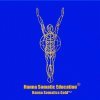QuestionHello Doctor,
Initially, thank you for being on here for people like us! It is appreciated. By way of background; I was diagnosed with a herniated L5/S1 from a lifting/twist accident approx 300 lbs @ 18 yrs old. I was also diagnosed with transitional vertebrae @ L5/S1 and R sided Bertolotti's with partial lumbarization of S1 on the left. SI Joint issues were also noted in 1987. I am now 41 yrs old. In 1990 I had the transverse process excised to maximize movement rather than fuse as it was the least restrictive in terms of mobility. Fusing was being saved as a last resort option. L4/5 was also noted as herniated in 1993. In 1993, was diagnosed as a result of another accident as having hypermobile/instability thoracic T-6 thru T8, as well as chronic neck strain (C2/3) hypermobile also.
Over the last 10 years, developing symptoms include; bladder & bowel incontinence where I can control but only to a certain point, then I have to go or else a full void will occur. Running water etc sets it off big time. There is post voidal residual on urine etc. I have significant sensory loss from my low back down my legs. I currently have trouble achieving or maintaining an erection due to loss of sensation and of course, pain, effects of meds, fear of performance failure etc. Historically, ED an issue due to meds and pain but now more complex and is due to sensory loss. Was diagnosed with multi-level DDD @ age 35. Facet joint issues as well. Indentation of thecal sac due to L5/S1 herniation since 1987 etc. Increased density on iliac side of sacroiliac joints noted in 1987.
I suffer from chronic neck pain to in between shoulders, daily migraine type headaches, thoracic and outer right rib pain, frontal rib pain, low back pain, bilateral hip pain, both in front and back of hips, bilateral leg pain, painful groin region, pain and desensitizing in the saddle area. My latest and worsening symptoms over the past 1 1/2 yrs are now, painful ejaculations, pain inside and along my tailbone down to my anus, a steady feeling of "blue balls" (pressure/pain/ache) from sitting or bending for any length of time. Any type of foreplay without release within a few hours will initiate the pain too. When I wash my scrotum and testicles most days, I have to do so extremely gently. Urologist thinks it's from my back but not sure exactly why. Decreased pinprick in perineal area etc. Left side usually worse than right but can be both. There are no concerns of infection/torsion etc as these have already been checked. CT scan done in July 2009 confirms no issues with organs in abdominal region and blood work negative for infections etc.
My questions are if you can please; Can the organic injuries I note above cause or contribute to pudendal neuralgia or PNE and if not what might it be? Would it be more inclined to be SI joint dysfunction? I know it's rare but there has to be an answer. Also, can disc herniations at such a young age contribute to early onset of DDD? Further, can these herniations and or LSTV contribute or cause the hyper mobility in the thoracic and cervical spine? I have shrunk by over 1" over the last 25 yrs, which, given the number of decreasing disc heights on multiple levels, is apparently having an impact overall on my whole spine. Any insight or opinions you would have would be greatly appreciated and I thank you in advance for your time. I know it's a complex case but like I tried to tell my family doc, if you brought your SUV to me for repair, you'd like some answers too and that's all I'm trying to obtain. Thanks again!
Answer
 Hanna Somatic Educatio
Hanna Somatic Educatio
Well, Ken, this all simplifies down pretty well: Your whole spinal musculature, including your neck, is in a state of contraction.
That accounts for disc degeneration, "hypermobility", disc herniations, neck strain and nerve impingement with sensory loss, localized pain, migraine headaches, and loss of muscular control (urination).
If you were my client, I would be examining you for that and for tight hip flexors, tight hamstrings, psoas muscles, intercostal (rib) muscles, pubicoccygeus muscles, and spinal extensors, all of which cause muscular, joint, and nerve pain due to compression and would account for loss of control of urination.
This are conditioning issues at the brain level (not organic injuries involving heredity or a disease process).
SI joint dysfunction is not usually a problem of the SI joints, but of surrounding musculature causing compression and torsion/twisting stresses in and through the SI joints.
"Blue balls"/pudental neuralgia is one effect of lumbo-sacral compression on nerves issuing from the region. The pattern involves the regions/muscle groups I have named, above.
The Bertolotti's is a red herring; transitional vertebrae and extra ribs are generally inconsequential -- but doctors look for SOMETHING unusual when diagnosis eludes them.
Though you have a lot going on, as I said, it reduces down to conditioned / habituated muscular tension patterns.
It would take some time to clear up, if you were my client, but doable, with consistent progress anticipated.
May I direct you to my articles page: http://somatics.com/page4b.htm
Of special interest:
http://somatics.com/conditions.htm
http://somatics.com/back_pain_terms.htm
http://somatics.com/back_pain.htm
http://somatics.com/psoas.htm
http://somatics.com/headaches.htm
That should be a good starting place for you.
Write for advice as to your next-step options.
regard,
Lawrence Gold
PS: For a theoretical understanding of clinical somatic education, get Thomas Hanna's book, "Somatics -- ReAwakening the Mind's Control of Movement, Flexibility and Health" (amazon.com)


